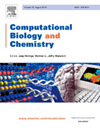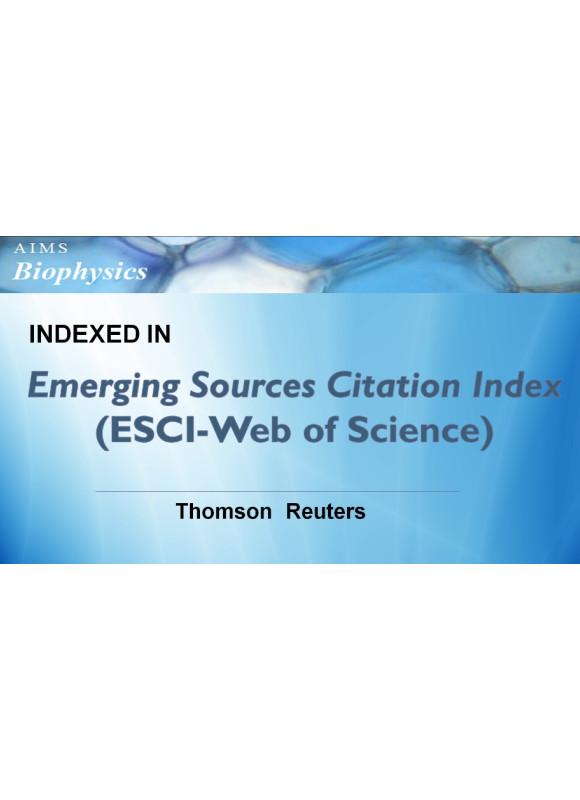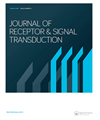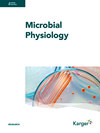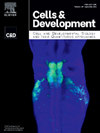Computational Biology And ChemistrySCIE
国际简称:COMPUT BIOL CHEM 参考译名:计算生物学和化学
- 基本信息:
- ISSN:1476-9271
- E-ISSN:1476-928X
- 是否OA:未开放
- 是否预警:否
- TOP期刊:否
- 出版信息:
- 出版地区:ENGLAND
- 出版商:Elsevier Ltd
- 出版语言:English
- 出版周期:Bimonthly
- 出版年份:2003
- 研究方向:生物-计算机:跨学科应用
- 评价信息:
- 影响因子:2.6
- H-index:55
- CiteScore指数:6.1
- SJR指数:0.497
- SNIP指数:0.782
- 发文数据:
- Gold OA文章占比:6.84%
- 研究类文章占比:100.00%
- 年发文量:144
- 自引率:0.0322...
- 开源占比:0.043
- 出版撤稿占比:0
- 出版国人文章占比:0.19
- OA被引用占比:0.0232
英文简介Computational Biology And Chemistry期刊介绍
Computational Biology and Chemistry publishes original research papers and review articles in all areas of computational life sciences. High quality research contributions with a major computational component in the areas of nucleic acid and protein sequence research, molecular evolution, molecular genetics (functional genomics and proteomics), theory and practice of either biology-specific or chemical-biology-specific modeling, and structural biology of nucleic acids and proteins are particularly welcome. Exceptionally high quality research work in bioinformatics, systems biology, ecology, computational pharmacology, metabolism, biomedical engineering, epidemiology, and statistical genetics will also be considered.
Given their inherent uncertainty, protein modeling and molecular docking studies should be thoroughly validated. In the absence of experimental results for validation, the use of molecular dynamics simulations along with detailed free energy calculations, for example, should be used as complementary techniques to support the major conclusions. Submissions of premature modeling exercises without additional biological insights will not be considered.
Review articles will generally be commissioned by the editors and should not be submitted to the journal without explicit invitation. However prospective authors are welcome to send a brief (one to three pages) synopsis, which will be evaluated by the editors.
期刊简介Computational Biology And Chemistry期刊介绍
《Computational Biology And Chemistry》自2003出版以来,是一本生物学优秀杂志。致力于发表原创科学研究结果,并为生物学各个领域的原创研究提供一个展示平台,以促进生物学领域的的进步。该刊鼓励先进的、清晰的阐述,从广泛的视角提供当前感兴趣的研究主题的新见解,或审查多年来某个重要领域的所有重要发展。该期刊特色在于及时报道生物学领域的最新进展和新发现新突破等。该刊近一年未被列入预警期刊名单,目前已被权威数据库SCIE收录,得到了广泛的认可。
该期刊投稿重要关注点:
Cite Score数据(2024年最新版)Computational Biology And Chemistry Cite Score数据
- CiteScore:6.1
- SJR:0.497
- SNIP:0.782
| 学科类别 | 分区 | 排名 | 百分位 |
| 大类:Mathematics 小类:Computational Mathematics | Q1 | 27 / 189 |
85% |
| 大类:Mathematics 小类:Organic Chemistry | Q2 | 66 / 211 |
68% |
| 大类:Mathematics 小类:Structural Biology | Q2 | 21 / 49 |
58% |
| 大类:Mathematics 小类:Biochemistry | Q2 | 190 / 438 |
56% |
CiteScore 是由Elsevier(爱思唯尔)推出的另一种评价期刊影响力的文献计量指标。反映出一家期刊近期发表论文的年篇均引用次数。CiteScore以Scopus数据库中收集的引文为基础,针对的是前四年发表的论文的引文。CiteScore的意义在于,它可以为学术界提供一种新的、更全面、更客观地评价期刊影响力的方法,而不仅仅是通过影响因子(IF)这一单一指标来评价。
中科院SCI分区Computational Biology And Chemistry 中科院分区
| 大类学科 | 分区 | 小类学科 | 分区 |
| 生物学 | 4区 | BIOLOGY 生物学 COMPUTER SCIENCE, INTERDISCIPLINARY APPLICATIONS 计算机:跨学科应用 | 4区 4区 |
中科院分区表 是以客观数据为基础,运用科学计量学方法对国际、国内学术期刊依据影响力进行等级划分的期刊评价标准。它为我国科研、教育机构的管理人员、科研工作者提供了一份评价国际学术期刊影响力的参考数据,得到了全国各地高校、科研机构的广泛认可。
中科院分区表 将所有期刊按照一定指标划分为1区、2区、3区、4区四个层次,类似于“优、良、及格”等。最开始,这个分区只是为了方便图书管理及图书情报领域的研究和期刊评估。之后中科院分区逐步发展成为了一种评价学术期刊质量的重要工具。
JCR分区Computational Biology And Chemistry JCR分区
| 按JIF指标学科分区 | 收录子集 | 分区 | 排名 | 百分位 |
| 学科:BIOLOGY | SCIE | Q2 | 35 / 109 |
68.3% |
| 学科:COMPUTER SCIENCE, INTERDISCIPLINARY APPLICATIONS | SCIE | Q2 | 80 / 169 |
53% |
| 按JCI指标学科分区 | 收录子集 | 分区 | 排名 | 百分位 |
| 学科:BIOLOGY | SCIE | Q2 | 43 / 109 |
61.01% |
| 学科:COMPUTER SCIENCE, INTERDISCIPLINARY APPLICATIONS | SCIE | Q2 | 76 / 169 |
55.33% |
JCR分区的优势在于它可以帮助读者对学术文献质量进行评估。不同学科的文章引用量可能存在较大的差异,此时单独依靠影响因子(IF)评价期刊的质量可能是存在一定问题的。因此,JCR将期刊按照学科门类和影响因子分为不同的分区,这样读者可以根据自己的研究领域和需求选择合适的期刊。
发文数据
- 国家/地区数量
- India169
- CHINA MAINLAND149
- USA51
- Iran42
- Turkey29
- Pakistan26
- South Korea19
- Brazil18
- Italy18
- Australia16
本刊中国学者近年发表论文
-
1、Microscopic model on indoor propagation of respiratory droplets
Author: Mondal, Manas; Chakrabarti, Srabani; Gao, Yi Qin; Bhattacharyya, Dhananjay; Chakrabarti, Jaydeb
Journal: COMPUTATIONAL BIOLOGY AND CHEMISTRY. 2023; Vol. 102, Issue , pp. -. DOI: 10.1016/j.compbiolchem.2022.107806
-
2、QM/MM study of N501 involved intermolecular interaction between SARS-CoV-2 receptor binding domain and antibody of human origin
Author: Liu, Yuemin; Sulaiman, Hana F.; Johnson, Bruce R.; Ma, Rulong; Gao, Yunxiang; Fernando, Harshica; Amarasekara, Ananda; Ashley-Oyewole, Andrea; Fan, Huajun; Ingram, Heaven N.; Briggs, James M.
Journal: COMPUTATIONAL BIOLOGY AND CHEMISTRY. 2023; Vol. 102, Issue , pp. -. DOI: 10.1016/j.compbiolchem.2023.107810
-
3、Molecular docking and molecular simulation studies for N-degron selectivity of chloroplastic ClpS from Chlamydomonas reinhardtii
Author: Wang, Ning; Gao, Jian-Guo; Wu, Ming-Wei
Journal: COMPUTATIONAL BIOLOGY AND CHEMISTRY. 2023; Vol. 103, Issue , pp. -. DOI: 10.1016/j.compbiolchem.2023.107825
-
4、BRWMC: Predicting lncRNA-disease associations based on bi-random walk and matrix completion on disease and lncRNA networks
Author: Zhang, Guo-Zheng; Gao, Ying-Lian
Journal: COMPUTATIONAL BIOLOGY AND CHEMISTRY. 2023; Vol. 103, Issue , pp. -. DOI: 10.1016/j.compbiolchem.2023.107833
-
5、Dual computational and biological assessment of some promising nucleoside analogs against the COVID-19-Omicron variant
Author: Abdalla, Mohnad; Rabie, Amgad M.
Journal: COMPUTATIONAL BIOLOGY AND CHEMISTRY. 2023; Vol. 104, Issue , pp. -. DOI: 10.1016/j.compbiolchem.2022.107768
-
6、Insights into beta(3)-adrenoceptor agonism through comprehensive in silico investigation
Author: Luan, Jiasi; Hu, Baichun; Wang, Hanxun; Liu, Haihan; Wang, Shizhun; Chen, Lu; Li, Weixia; Wang, Jian; Cheng, Maosheng
Journal: COMPUTATIONAL BIOLOGY AND CHEMISTRY. 2023; Vol. 104, Issue , pp. -. DOI: 10.1016/j.compbiolchem.2023.107836
-
7、BCM-DTI: A fragment-oriented method for drug-target interaction prediction using deep learning
Author: Dou, Liang; Zhang, Zhen; Liu, Dan; Qian, Ying; Zhang, Qian
Journal: COMPUTATIONAL BIOLOGY AND CHEMISTRY. 2023; Vol. 104, Issue , pp. -. DOI: 10.1016/j.compbiolchem.2023.107844
-
8、ECAmyloid: An amyloid predictor based on ensemble learning and comprehensive sequence-derived features
Author: Yang, Runtao; Liu, Jiaming; Zhang, Lina
Journal: COMPUTATIONAL BIOLOGY AND CHEMISTRY. 2023; Vol. 104, Issue , pp. -. DOI: 10.1016/j.compbiolchem.2023.107853
投稿常见问题
-
请问这本期刊属于什么级别呢?可用于职称评定吗?
一般刊物只分省级、部级、核心,期刊本身是没有几类划分的,具体是几类或者几级,您可以对照单位的分类文件确认一下。Computational Biology And Chemistry杂志是由Elsevier Ltd出版的一本SCIE,可用于职称评定。
-
你们能够提供哪些核心期刊的咨询服务?
大多数核心期刊我们都是可以提供咨询服务的。目前核心期刊主要分为以下几类:1.国内核心:按照权威度排序,社科类:南大核心>南大扩展>北大核心>科技核心 按照权威度排序。工科类:CSCD C库>CSCD E库(相当于CSCD扩展)>北大核心>科技核心。2.国外核心(全英文):按照权威度排序为:SSCI=SCI>EI>ISTP=CPCI。
-
想快速发表,可以加急吗?
为了确保您的职称评定顺利进行,我们建议提前半年到一年开始准备,这样能够保证有充足的时间来处理所有相关事宜。如果客户需要加急服务,我们会与杂志社进行沟通,以确定是否可以提供加急服务。请注意,如果确认可以加急,可能会收取一定的加急费用。
-
你们提供的服务可以确保稿件被发表吗?
期刊编辑会综合考虑多个因素,如发表范围、学术价值和原创性等,对稿件进行综合评估。尽管任何机构均无法保证每篇稿件都会被发表,但我们可以用专业知识和丰富经验,协助您理解并遵循期刊的发表要求,从而提高您的稿件被发表的机率。
-
请问期刊发表的费用如何?
期刊发表的费用因期刊不同而异。根据您的需求,我们会为您推荐性价比最高的期刊,并提供专业的期刊供您选择。一般来说,只要符合职称要求,大多数作者都会选择性价比最高的期刊作为意向期刊进行重点咨询。我们会为您提供详细的期刊信息和费用说明,以确保您能够做出明智的选择。
-
如果稿件被拒,未能成功发表,费用是否可以退还?
一般来说,我们推荐的期刊和您的专业方向、文章情况都是匹配的,极少出现稿件被拒的情况。如果稿件被拒,期刊编辑会提供详细的拒稿信和建议,以帮助您了解拒稿原因并改进您的稿件。关于退款政策,具体情况可能因期刊不同而异,请您咨询我们的工作人员以获取详细信息。
免责声明
本站合法持有《出版物经营许可证》,仅销售经国家新闻出版署批准的合法期刊,不是任何杂志官网,不涉及出版事务。本站仅提供有限咨询服务,需要用户自己向出版商投稿且没有绿色通道,是否录用一切以出版商通知为准。提及的第三方名称或商标,其知识产权均属于相应的出版商或期刊,本站与上述机构无从属关系,所有引用均出于解释服务内容的考量,符合商标法规范。本页信息均由法务团队进行把关,若期刊信息有任何问题,请联系在线客服,我们会认真核实处理。若用户需要出版服务,请联系出版商 通讯方式:ELSEVIER SCI LTD, THE BOULEVARD, LANGFORD LANE, KIDLINGTON, OXFORD, ENGLAND, OXON, OX5 1GB。
相关期刊推荐
热门期刊推荐
-
Briefings In Bioinformatics
中科院 2区 JCR Q1
-
Computational And Structural Biotechnology Journal
中科院 2区 JCR Q2
-
Plant Physiology
中科院 1区 JCR Q1
-
Microbiological Research
中科院 1区 JCR Q1
-
Faseb Journal
中科院 2区 JCR Q1
-
Journal Of Molecular Cell Biology
中科院 2区 JCR Q2
-
Journal Of Plant Growth Regulation
中科院 3区 JCR Q1
-
Cell Communication And Signaling
中科院 2区 JCR Q1
